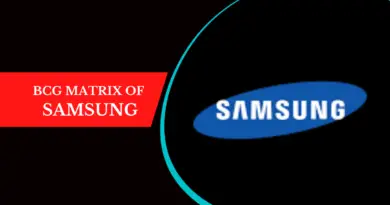Analyzing HDFC Bank: A Comprehensive SWOT Analysis
HDFC Bank, one of India’s leading private sector banks, has cemented its position as a powerhouse in the banking industry. As it navigates through the dynamic landscape of finance, it’s crucial to conduct a SWOT analysis to assess its strengths, weaknesses, opportunities, and threats. This analysis offers valuable insights into HDFC Bank’s current standing and its potential future trajectory.
SWOT Analysis of HDFC Bank

Strengths:
1. Strong Market Presence:
HDFC Bank boasts a robust presence in the Indian banking sector, with a vast network of branches and ATMs spread across the country. This extensive reach enables it to cater to a diverse customer base, ranging from retail individuals to large corporations.
Example: HDFC Bank operates over 5,345 branches and 15,311 ATMs, providing convenient banking services to millions of customers nationwide.
2. Technological Innovation:
Embracing technological advancements has been a hallmark of HDFC Bank’s strategy. Its digital banking platforms offer seamless transactions, mobile banking, and internet banking services, enhancing customer convenience and experience.
Example: HDFC Bank’s mobile banking app provides customers with features such as fund transfers, bill payments, and investment tracking, all at their fingertips.
3. Strong Financial Performance:
HDFC Bank has consistently delivered impressive financial results, showcasing robust revenue growth and profitability over the years. Its prudent risk management practices and diversified revenue streams contribute to its financial resilience.
Example: In the fiscal year 2023-24, HDFC Bank reported a net profit of INR 31,116 crore, marking a significant increase from the previous fiscal year.
Weaknesses:
1. Overdependence on Indian Market:
While HDFC Bank’s dominance in the Indian market is a strength, it also poses a vulnerability. Overreliance on the domestic market exposes the bank to regulatory risks, economic fluctuations, and geopolitical uncertainties specific to India.
Example: Economic slowdowns or regulatory changes within India could potentially impact HDFC Bank’s growth trajectory and profitability.
2. Limited Global Presence:
Unlike some of its global counterparts, HDFC Bank’s international presence is relatively limited. This lack of diversification geographically exposes it to risks associated with a single market.
Example: Economic downturns or geopolitical tensions in India could significantly affect HDFC Bank’s operations and expansion plans.
Opportunities:
1. Expansion of Digital Banking:
The ongoing digital revolution presents HDFC Bank with ample opportunities to further enhance its digital banking offerings. Investing in advanced technologies such as blockchain, artificial intelligence, and data analytics can unlock new avenues for growth and innovation.
Example: Introducing AI-powered chatbots for customer support can improve efficiency and responsiveness, thereby enhancing the overall customer experience.
2. Penetration in Rural Markets:
Despite its extensive urban presence, HDFC Bank has room for expansion in rural and semi-urban areas of India. Targeting these underserved markets through tailored products and services can tap into a vast reservoir of untapped potential.
Example: Launching financial literacy programs and offering simplified banking solutions tailored to the needs of rural customers can facilitate market penetration and drive growth.
Threats:
1. Intense Competition:
HDFC Bank operates in a highly competitive environment, facing stiff competition from both domestic and international players. Rival banks, fintech startups, and non-banking financial institutions vie for market share, exerting pressure on margins and customer retention.
Example: Aggressive pricing strategies or innovative offerings from competitors could pose a threat to HDFC Bank’s market position and profitability.
2. Regulatory Challenges:
Regulatory compliance is a perennial challenge for banks, and HDFC Bank is no exception. Adherence to stringent regulatory requirements imposed by the Reserve Bank of India (RBI) and other regulatory bodies is essential but can also constrain operational flexibility and increase compliance costs.
Example: Any changes in regulatory policies or directives could necessitate adjustments in HDFC Bank’s operations and strategies, potentially impacting its performance.
Conclusion
Conducting a SWOT analysis provides valuable insights into HDFC Bank’s strengths, weaknesses, opportunities, and threats. While the bank enjoys a strong market presence, technological prowess, and robust financial performance, it must address challenges such as overdependence on the Indian market and intense competition. By leveraging its strengths, seizing opportunities, and mitigating threats, HDFC Bank can navigate the complexities of the banking landscape and sustain its leadership position in the years to come.



